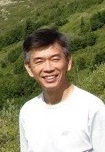Institute: University of Rhode Island
Title: Professor
Country/Region: USA
Period: 2018/09/01 ~ 2018/11/30
Theme: Reverse-time migration imaging for the Japan subduction zone
Host: Hitoshi KAWAKATSU
Introduction: Scientific curiosity and societal concern are two factors in Dr. Yang Shen’s career choice of studying seismic activities that can lead to destructive earthquakes.
A native of China, Shen was a young student when China was hit by an earthquake in 1976. While only 7.6 on the Richter scale, the collapse of poorly constructed buildings in China caused a huge number of fatalities and injuries and the tragic episode was the beginning of his interest in seismology.
Shen received his bachelor’s degree at Nanjing University in 1984 and his masters at the Institute of Oceanology, Chinese Academy of Sciences three years later. He came to the U.S. in 1990 and pursued his doctorate in geophysics at Brown University.
He landed a postdoctoral position at Woods Hole Oceanographic Institution and concentrated on seamounts formed at the mid-ocean ridge in the South Pacific but his interest in seismology emerged again.
Joining University of Rhode Island in 1998, Shen embarked on a collaborative project studying the Tibetan plateau. “This particular region is one of the most active of the continental collisions,” he says, referring to the meeting of the India Plate with the Eurasian Plate. Using instruments, he and his collaborators monitored earthquake activities in the Tibetan area.
A recent project is one being done for the Unites State Geological Survey that wants researchers to gather data near Seattle in the Cascadia Subduction Zone. This study involves the structure of sediments as far down as several kilometers and one of the purposes is to help officials to formulate building code regulations. “They want to be able to understand what kind of ground shaking they can expect” in the advent of an earthquake there, says Shen. Another project he is involved in is studying the seismic structure of the Eurasian Plate. This project is aimed at trying to determine the differences between natural seismic waves and waves caused by underground nuclear testing. Additional information about Shen's research can be found at
https://sites.google.com/view/seismo/.
At ERI, Shen plans to apply a recently developed 3D passive-source, reverse time migration method to image the mantle discontinuities and scatters.
For relaxation, Shen loves hiking, tennis and volleyball.
Fiscal Year: 2018


